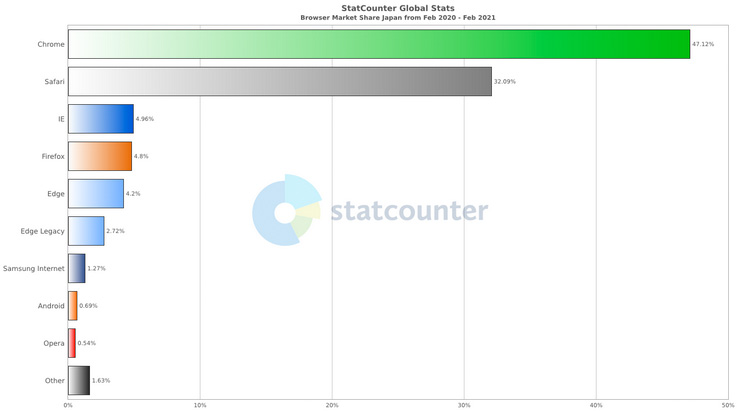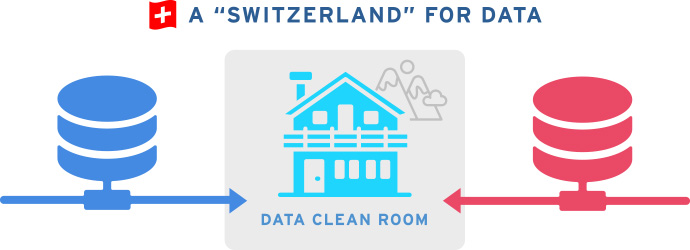The End of Third-party Cookies and Implications for Digital Marketing Strategies

Earlier this year, Google confirmed its intention to move away from what could be the biggest pillar of digital marketing strategies that has ever been constructed: third-party cookies. The change is big, and it is coming fast. Google Chrome will be reflecting this update next year (2022).
The conversation around privacy and third-party cookies is not new. While Google is raising eyebrows with this move, Apple is already restricting third-party cookies across most of its products, i.e., via the ITP (Intelligent Tracking Prevention) protocol, which is now renowned but arguably infamous in digital marketing. ITP has been restricting most third-party cookies in the Safari browser since 2017.
Such a third-party cookie restriction has no doubt been in the periphery of most digital marketers. For many, it has still been viable to execute strategies that would work on most browsers except Safari, which is another way of saying “would work in Chrome but not in Safari.” But Google’s move makes it impossible to ignore. The use of Google Chrome worldwide accounts for almost 50% of all desktop browsers, and this trend includes Japan.

In simple terms: The problem with third-party cookies
The fundamental issue with third-party cookies is not the cookies themselves—it’s the third-parties.
This is how it works:
- Jane visits example.com. The owner of this site, like most sites today, uses marketing tags (e.g., Criteo, Facebook, Google Ads, i.e., the third parties) that load during Jane’s journey on the site.
- The marketing tags fire and communicate with the ad provider’s (third-party) servers. In this communication, relevant information configured in the tag (often the site owner has some say in what data to send) is sent to the ad provider’s servers, i.e., the date visited, page loaded, and products viewed, etc.
- The ad server creates an ID to identify this user and sends back instructions to the browser to create a cookie including this ID. The cookie is stored in the browser.
- If Jane goes to a different site that has ads from the same ad provider, when the ad script executes it checks to see if a cookie by the ad provider already exists. If so, it grabs the ID and requests ads that are related or relevant to the ID in the cookie.
In other words, when Jane is browsing other sites that include ads served by Criteo, Facebook, or Google Ads, these third parties can show ads related to Jane’s journey at example.com.
So what’s the problem?
While the system today has worked for many ways, it also came with unintended consequences. Here are some potential privacy issues that these interactions sometimes have to grapple with.
- Revealing browsing/shopping habits to unwanted parties: When Jane visits sites that serve these targeted ads, the sites serving the ads can potentially get a sense of her shopping or browsing habits without Jane’s permission.
- Data in the hands of ad vendors: Experienced digital marketers are aware that they need to be cautious about the user data that they send to ad providers. After all, this data is stored in the ad providers’ servers and is under their control. Many times, the data sent is reasonable, but cases have been seen where tags fire on all pages, thereby sending a copy of the whole-page HTML to the third-party—EVERYTHING. What if the user is on a payment confirmation page? The site would send everything that is visible on the screen—name, address, phone number, etc. This would be a rare case, but it illustrates the point.
- Trust: Jane’s expectation was an interaction with example.com, not with ad providers. So once she hears all the news about data sharing, trust is eroded.
Considerations for Future Digital Marketing Strategies
At the very core of this technically sophisticated digital ecosystem, there is a simple idea: users should be the ones to willingly provide personal information and have a basic understanding of who gets to use their data.
Digital strategies should strive towards this idea at a high level. The digital ecosystem is complicated and in constant flux, but focusing on the following sensible, non-technical ideas could be a future-proof tactic.
Focus on first-party
The elimination of third-party cookies means that a digital marketing strategy will have to rely much more heavily on first-party data, i.e., first-party cookies. This might just be a good thing. Winning strategies will make it possible for customers to make an informed trade, i.e., personal data for value from the sites they visit.
Brands will need to provide a clear and compelling reason for users to engage with them beyond browsing their website. The better the value and the clearer such is communicated, the bigger the competitive advantage.
With this change in focus, the outcomes below will follow.
- Brands will have to take their digital value proposition to the next level. Earning customer trust enough to provide name, email, phone, etc., will be part of a winning strategy. Customers will demand value from their online brands, not necessarily monetary value, but rather a more-holistic definition of value—exclusiveness, speed, reliability, cost, emotion, and value as related to a brand’s business strategy.
- Businesses that own more of the customer journey will better understand their customers. A good example of a brand that bet on this approach early is Nike. Nike famously cut ties with Amazon in 2020. This move took years, and it was part of a bigger strategy by Nike to own the customer journey as much as possible. It forced Nike to provide a superior customer experience and earned customer data as first-party data that is actionable. This not only gives Nike a better understanding of its customers, but also avoids having to depend on Amazon for data.
- Customers have a better understanding of how their data is being used. A major concern for customers—and the issue that the industry is trying to address with this update—is the sharing of customer data between brands and advertisers. Customers might be relatively comfortable sharing data with Facebook. They are also comfortable sharing their favorite brand. The problem, understandably, is when Facebook and the brand share their customers’ information without the customers’ consent. Addressing this will likely create peace of mind for most customers… hopefully.
Data clean rooms: The closest alternative
Get ready to hear more and more about “data clean rooms” or “walled gardens.” This is some of what the industry is positioning as a replacement for the current advertising ecosystem.
The idea is simple. Ad targeting today works by sites allowing third parties direct access to customer sites. Since this type of infrastructure is starting to disappear, brands and advertisers will instead gravitate to a space where they can both share their data so as to create audiences while preserving their customers’ privacy (via data clean rooms).

If data clean rooms work as planned, they will become a massive competitive advantage for those that are able to harness them.
If you are not yet comfortable with data clean rooms, check out Data Clean Rooms: Digital Marketing’s Next Big Move.
Conclusion
The end of third-party cookies will undoubtedly bring significant changes—some we can see now, many we cannot. But while it is easy to get lost in the industry’s technically complex and fluid environment, it is becoming more important to ensure that teams are able to step back and understand a clear reasonable strategy based on ideas that everyone can understand. Tactics will vary, but winning strategies have one commonality: value for the customer. Finding ways to showcase and provide value to the customer with as little friction as possible might be the only constant amid this chaos.

